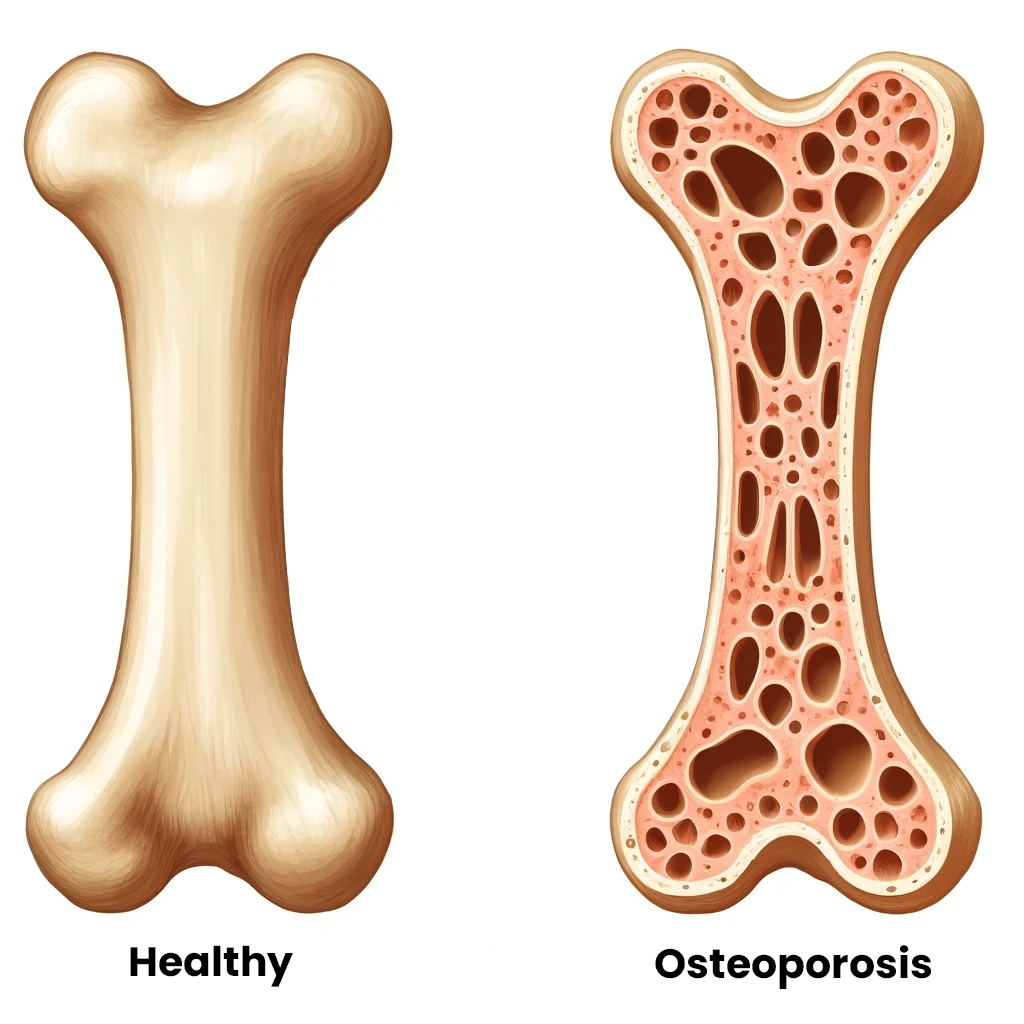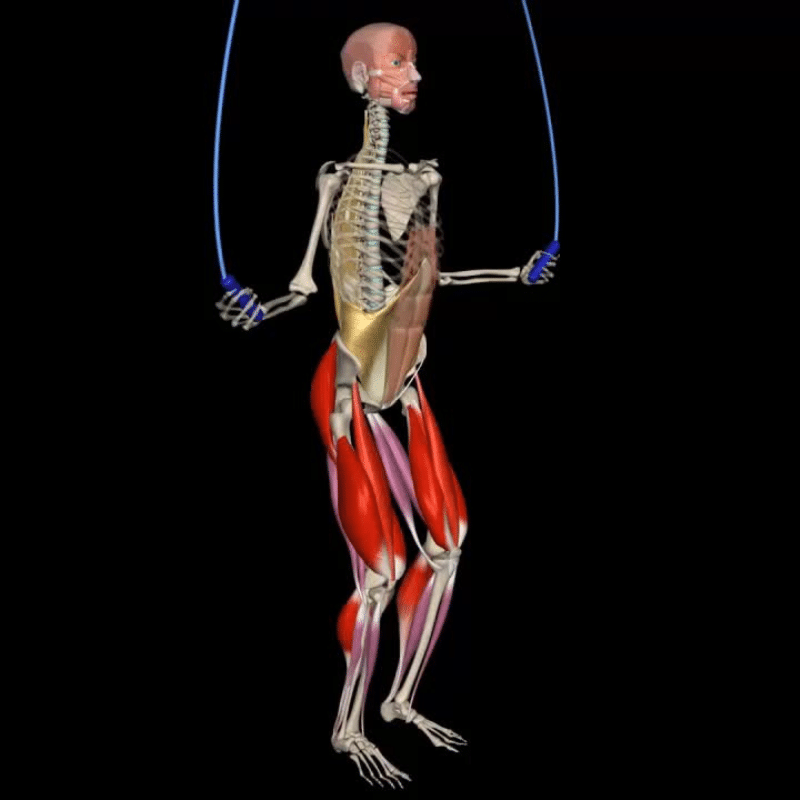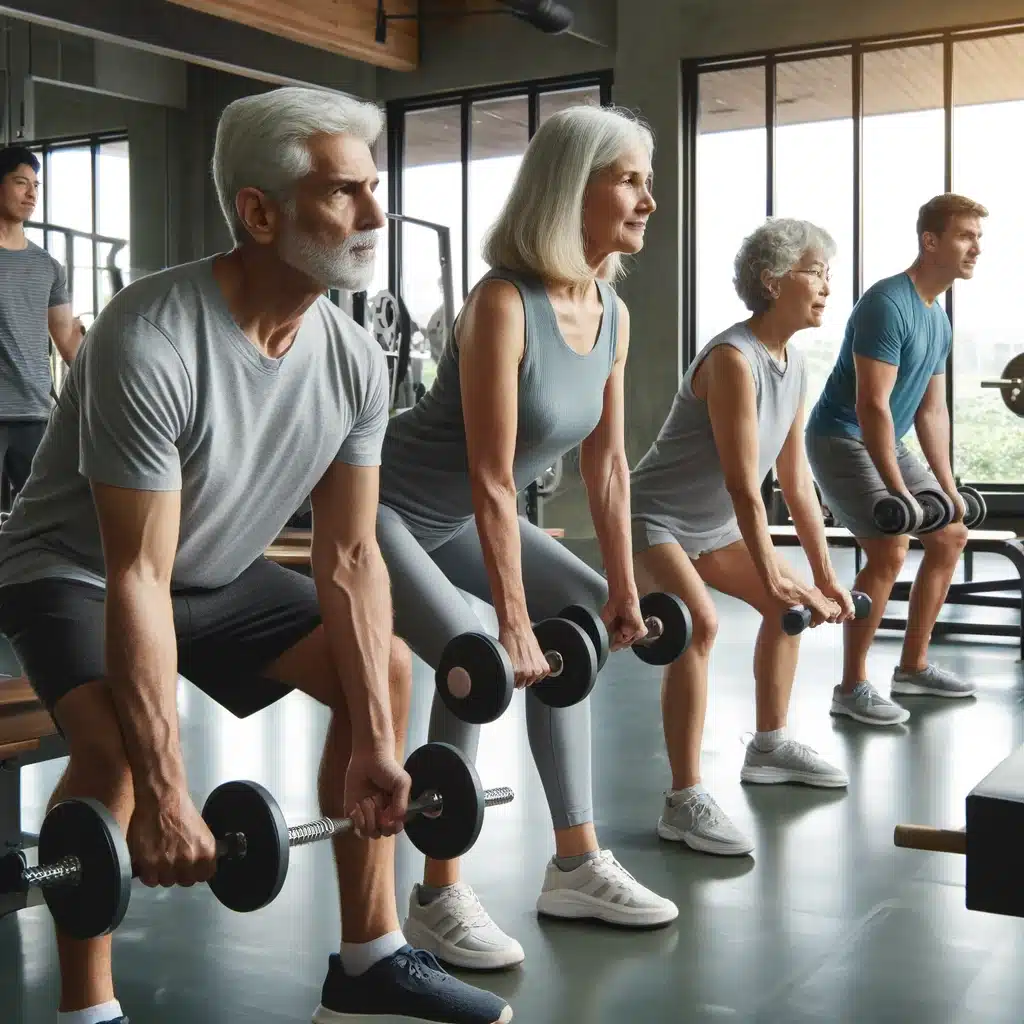Most people know the benefits of strength training for building muscle mass (if you’re not, check out our article on Strength Training).
But did you know that strength training is crucial for building and maintaining bone mass?
You might have noticed a bone-building exercise group at your gym, usually of older adults lifting light weights of 1-3 kilograms. But is this the most effective way to increase bone mass? Can we enhance bone density earlier in life to protect ourselves from bone loss as we age? What are the consequences of losing bone mass?
In this Muscle and Motion article, I will address these questions and help you better understand the latest evidence about the best way to increase bone density.
Understanding bone density decline
To understand why our bone density decreases over time, we must first understand how our bones are structured and function. Contrary to popular belief, bones are not just a rigid framework for our bodies that help it move around like a machine. Bones are living biological tissues constantly undergoing dynamic changes. They are continually remodeled through a delicate balance of formation and resorption. This process involves specialized cells, including:
- Osteoblasts – in charge of producing new bone tissue
- Osteoclasts – in charge of breaking down old bone
The interplay between these cells ensures that our bones remain strong yet flexible enough to withstand everyday stresses. Collagen, the protein framework within bones, provides flexibility, while minerals like calcium and phosphorus offer structural rigidity. Osteocytes are embedded in the mineral matrix and are mature bone cells that communicate with other cells to regulate this ongoing remodeling process.
However, this balance can shift as we age or experience hormonal changes. Bone resorption may outpace bone formation, leading to a net loss of bone density, a condition known as osteoporosis. This change makes bones more porous and fragile, increasing the risk of fractures.

Who is at risk of osteoporosis?
According to the National Institute of Arthritis and Musculoskeletal and Skin Diseases (NIAMS), osteoporosis is a condition that can affect anyone, regardless of gender, race, or age. However, certain factors significantly increase the risk:
- Age: The risk increases as you get older.
- Gender: Women are more likely to develop osteoporosis, especially around menopause.
- Race: Non-Hispanic white and Asian women are most at risk. African American and Hispanic women have a lower risk but are still significantly affected.
- Medications: Certain medications, such as some cancer therapies and glucocorticoid steroids, can increase the risk of developing osteoporosis.
- Lifestyle: People who consume excessive alcohol, smoke, or do not engage in regular physical activity are at a higher risk of developing osteoporosis.
How many people are affected by osteoporosis?
In the United States, approximately 10 million people are affected by osteoporosis. Additionally, another 34 million individuals have low bone mass density (BMD), known as osteopenia, which increases their risk of developing osteoporosis. The decrease in bone density associated with osteoporosis significantly raises the risk of fractures. Statistics show that 50% of women and 25% of men over the age of 50 will experience an osteoporosis-related fracture in their lifetime, with hip fractures accounting for around 15% of these cases.[2] These figures highlight the critical need for intervention to prevent and treat osteoporosis.
The role of exercise in treating osteoporosis
Physical exercise plays a crucial role in preventing and treating osteoporosis. Just as muscles adapt to physical load by growing stronger, bones respond by increasing their density. Consistency is one of the key factors in exercise for improving bone density. Regular exercise not only improves bone mineral density but also significantly enhances the quality of life, reduces pain, and improves balance in people with osteoporosis.[3-4]
It is important to emphasize that young and older adults can improve their bone mineral density by exercising regularly.
Best exercises for keeping bones healthy
First and foremost, if you’ve been diagnosed with osteoporosis, it’s important to consult your doctor to discuss possible medical treatments. This article will focus on exercises that help improve bone density. It’s important to remember that individuals with osteoporosis have an increased risk of fractures, so a gradual exercise program is necessary.
Key principles for increasing bone density
- Weight-bearing and muscle-strengthening exercises: Bones remain strong when subjected to regular work. Weight-bearing impact and muscle-strengthening exercises are the best way to maintain bone strength.
- Short bursts of activity: Short, intense bursts of activity are particularly effective for bone health. High-intensity interval training (HIIT) and alternating between running and strength exercises are excellent examples.
- Variety in movements: Incorporate a range of movements in different directions and at various speeds to improve bone health.
- Impact training: Impact training, which includes activities that involve jumping and landing, has a significant positive effect on bone density. Studies have shown that people participating in high-impact sports—such as volleyball, hurdling, squash, soccer, and speed skating—tend to have higher bone density compared to those involved in weightlifting.[5]
- Balance training: Incorporate exercises that improve balance into your training program. The main concern with decreased bone density is the increased risk of fractures from falls. Balance training can help prevent falls and reduce this risk.
- Gradual Progression: Gradually increase the load and impact of your exercises to allow your body to adapt and improve bone density over time. Ensure adequate rest between sessions to support recovery and bone remodeling.
Bone density building workout plan (3 days a week)
This workout plan is designed to improve bone density with three weekly sessions. Each session incorporates weight-bearing exercises, muscle-strengthening exercises, impact training, and balance exercises. The selected exercises focus on compound movements rather than isolation exercises to maximize the benefits.
In addition to this training program, meeting the recommended physical activity guidelines set by the World Health Organization (WHO) is essential. If you’re new to the gym or resistance training, don’t worry! We’ve got you covered. Check out this article, First Steps in the Gym: A Workout Program for Beginners, for a detailed guide.
Weekly schedule:
- Monday: Full-Body Strength & Impact Training
- Wednesday: Focused Resistance Training
- Friday: HIIT, Impact & Balance Training
Workout Details:
Monday: Full-Body Strength & Impact Training
- Warm-Up (10 minutes): Light jogging or brisk walking
- Jumping Jacks (Warm-Up & Impact Exercise)
- 3 sets of 20 reps
- Goal: Full-body warm-up and improve bone density through impact
- Barbell Squat (Functional Exercise)
- 3 sets of 8-12 reps
- Goal: Strengthen legs and the spine, preventing vertebral fractures
- Weighted Walking Lunge (Balance & Lower Body Strength)
- 3 sets of 12 reps per leg
- Goal: Enhance balance lower body strength and add an impact element
- Rope Jumping (Aerobic and Impact Exercise)
- 3 sets of 1 minute
- Goal: Build bone mass, improve balance coordination, and prevent falls
Wednesday: Focused Resistance Training
- Warm-Up (10 minutes): Light jogging or stairs training
- Barbell Deadlift (Functional Exercise)
- 3 sets of 8-12 reps
- Goal: Strengthen legs and back, improve bone density, and enhance daily functional movements
- Push-Ups (Upper Body Strength)
- 3 sets of 10-15 reps
- Goal: Strengthen chest, shoulders, and triceps.
- Advance: Add impact to increase bone density in your upper body by using the jumping push-up with different incline levels.
- Rows (Back Strength)
- 3 sets of 8-12 reps
- Goal: Strengthen upper back and improve posture
- Dumbbell Shoulder Press (Upper Body Strength)
Friday: HIIT, Impact & Balance Training
-
- Warm-Up (10 minutes): Light jogging or brisk walking
- HIIT Circuit (Repeat 3 times) Adjust the rest and work time according to your fitness level and gradually increase
- Jumping jacks (20 seconds)
- Rest (10 seconds)
- Bodyweight squat (20 seconds)
- Rest (10 seconds)
- Single-leg standing calf raises (20 seconds)
- Rest (10 seconds)
- Bodyweight side lunges
- Goal: Improve cardiovascular health, bone density, and overall fitness
- Balance Exercises
-
- Single-leg stands (3 sets of 30 seconds each leg)
- Heel-to-toe walk (3 sets of 20 steps)
- Goal: Improve balance and prevent falls
To summarize, this article highlights the importance of strength training in preventing osteoporosis and reducing fracture risks by building and maintaining bone density. We identify key risk factors for osteoporosis, such as age, gender, and lifestyle choices. We emphasize the importance of regular weight-bearing activity, strength training, and the impact of enhancing bone density.
It provides a detailed workout plan that includes impact training, HIIT, resistance training, and balance exercises, promoting gradual progression to improve bone strength.
Ever wondered what makes our anatomical animations so accurate and engaging? Click here to learn about our Quality Commitment and the experts behind our content.
At Muscle and Motion, we believe that knowledge is power, and understanding the ‘why’ behind any exercise is essential for your long-term success.
Let the Strength Training App help you achieve your goals! Sign up for free.
Reference:
- NIAMS. (2017, April 7). Osteoporosis. National Institute of Arthritis and Musculoskeletal and Skin Diseases.
- Leigey, D., Irrgang, J., Francis, K., Cohen, P., & Wright, V. (2009). Participation in high-impact sports predicts bone mineral density in senior Olympic athletes. Sports Health, 1(6), 508–513.
- Marcu, R. I., Patru, S., Bighea, A. C., Traistaru, R., and Popescu, R. S. (2015). FRI0288 Role of physical exercice program in patients with osteoporosis. Ann. Rheum. Dis. 74, 521–529.
- Filipović, T. N., Lazović, M. P., Backović, A. N., Filipović, A. N., Ignjatović, A. M., Dimitrijević, S. S., et al. (2021). A 12-week exercise program improves functional status in postmenopausal osteoporotic women: Randomized controlled study. Eur. J. Phys. Rehabil. Med. 57, 120–130.
- Nikander, R., Sievänen, H., Heinonen, A., & Kannus, P. (2005). Femoral neck structure in adult female athletes subjected to different loading modalities. Journal of Bone and Mineral Research: The Official Journal of the American Society for Bone and Mineral Research, 20(3), 520–528.



